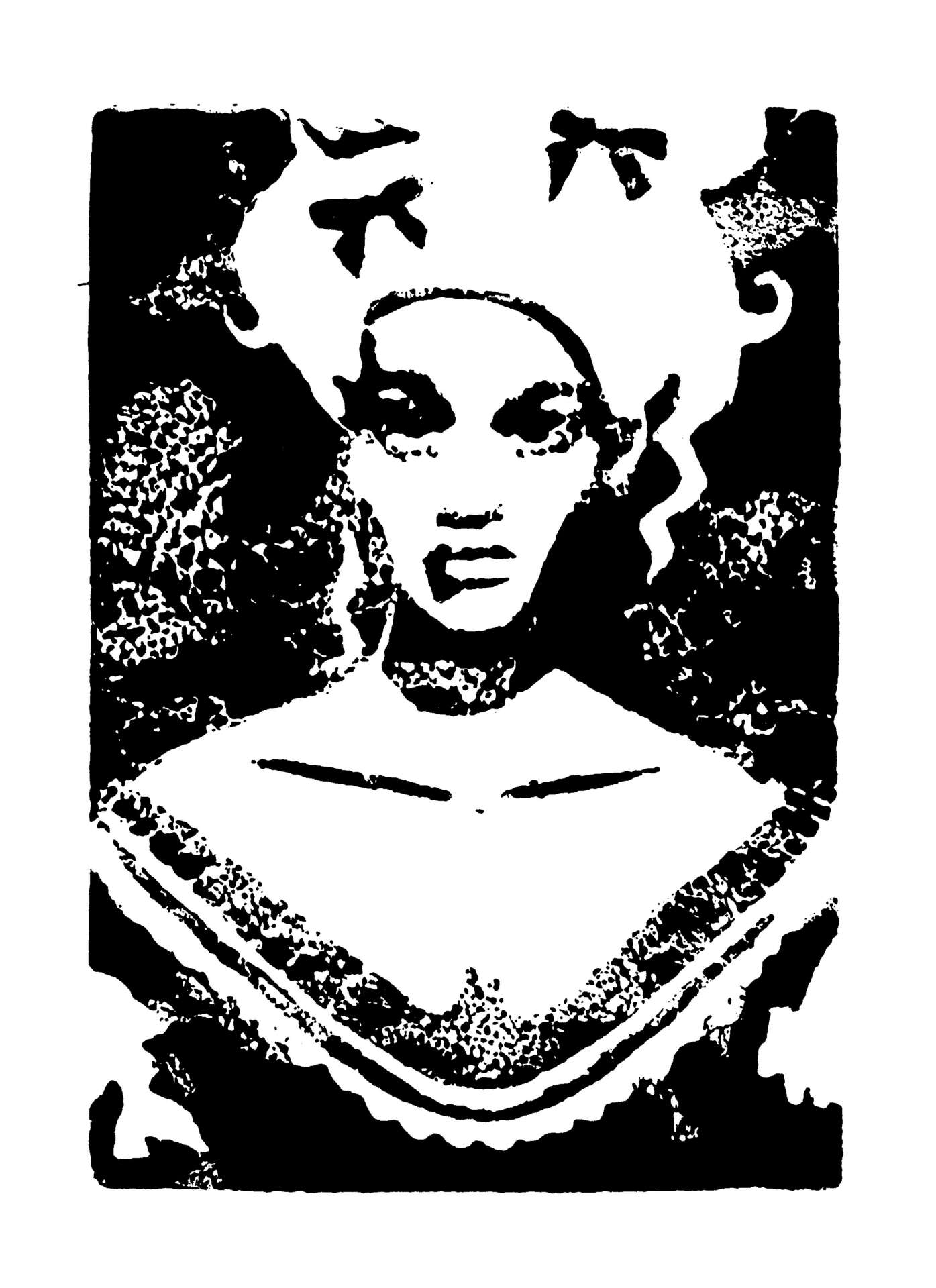We caught up with the brilliant and insightful Eric Clift-Thompson a few weeks ago and have shared our conversation below.
Eric, thanks for joining us, excited to have you contributing your stories and insights. We’d love to hear about a project that you’ve worked on that’s meant a lot to you.
While there’s definitely some of myself in all I create, my Vampthology series is really special to me. The two zines are collections of short stories and poetry- illustrated though a mixture of linocut, mixed media printmaking, and digital illustration- that use vampires as metaphors for facets of the human experience such as the impacts of capitalism, queerness, grief, and more. The concept and format of each Vampthology zine tie them together, but both installments have their own identity in a way. Even though it’s through the lens of vampiric folklore and fantasy, the stories in there are all very personal; it’s a level of vulnerability, personal communication, and indulgence that goes beyond my typical work. I hope that both installments of Vampthology have had an impact on people because that’s really what this is about- creating something that’s incredibly indulgent and putting it out into the world in hopes that someone connects with you. The zines aren’t complete until they’re in someone else’s hands.
That being said, both zines can be viewed for free on my website (etvt.art). Check them out!


Eric, before we move on to more of these sorts of questions, can you take some time to bring our readers up to speed on you and what you do?
My name is Eric Clift-Thompson and I am an artist, writer, and college professor based in Columbus, Ohio! Most often my artwork is created through printmaking, illustration, and zines- sometimes combining the three. I grew up in a rural, conservative area. Before I even had the tools to know who I was, I knew I didn’t fit in. This has played a key role in my work where community, access, and communication are key. I love telling stories through my art and although the stories I tell are often macabre and folkloric, the emotions and intention are real and genuine. By indulging in subjects surrounding death and the grotesque, I am becoming comfortable with the uncomfortable aspects of life and extending that same opportunity to my potential audience. Again, the hope is for an exchange to happen. As someone who struggles with verbal communication and making human connections, I hope that the art speaks in a way that I cannot.


Have any books or other resources had a big impact on you?
It’s hard to pick a single one (although shoutout to bell hooks’ “Teaching to Transgress” and Audre Lorde’s “The Master’s Tools”), but I think something that helped me immensely that I try to get my students to understand is that what has fed my work the most is engaging with things outside of their realm of visual art. Don’t get me wrong- practicing your skills, knowing who has made before you, engaging with your contemporaries, exposing yourself to visual work outside of your typical mediums- all of that is very important. However, it’s what I have learned about and engaged with outside of visual art that has given me something to say. The Music Appreciation class I took during undergrad was pivotal for me; without it my work wouldn’t be what it is. In short, don’t forget to be a human being outside of art. These topics, experiences, and explorations are what feeds your work!


How can we best help foster a strong, supportive environment for artists and creatives?
There’s a few things I’d like to touch on here, but honestly I think it all circles back to capitalism. Our country’s treatment of art as content, the removal of art programs from schools, the dismissal of the importance of art in general, all circles back to it. If there’s one thing I could hammer home, though, it’s that artists need money, and this isn’t just about paying artists more and valuing their work (although that is definitely important). How many artists cannot create work because they are focused on survival? How many artists do not have the time or energy to create because they’re working multiple jobs? How many people with the potential to be artistic game-changers don’t create because they can’t afford to? What about the artistic expression of “non-professionals”? Wouldn’t we all create more and engage with art if we weren’t in a constant state of survival? Being a professional artist is often a privilege and almost always a struggle. In order to “make it” you almost always have to already be there. I’m married, no kids, no credit cards or crazy spending. My husband works full time at the art museum, and I work there part-time in addition to teaching at CCAD; I’m unionizing at both workplaces. We barely make rent and live off of ramen. Among all of this, how am I supposed to thrive as a professional artist? How am I supposed to create at all? How am I supposed to most effectively teach the next generation of artists? This is a common problem for most artists I know. High tides lift all boats! Better conditions for all workers means better making conditions for your artists (and a union is a great way to get there).


Contact Info:
- Website: https://www.etvt.art
- Instagram: https://www.instagram.com/etvtart/
- Twitter: https://twitter.com/ETVTArt


